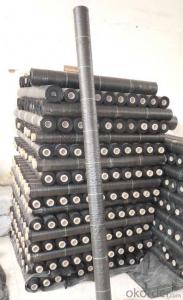Geotextiles as a versatile family of materials has changed the civil engineering and construction sector significantly. The woven non-woven geotextile is, among others, a combination of toughness and pliability. In this article, we delve into these fabrics to discover their uses, advantages and how they differ.
The Amazements of Woven Geotextiles
Woven geotextiles are made by weaving threads or fibers through each other in a pattern that creates a fabric with a specific texture and structure. This technique produces strong resilient fabric that resists wear and tear. Such fabrics are mainly used in applications requiring high tensile strength like soil reinforcement structures and slope stability.
Advantages of Non-Woven Geotextiles
Conversely, non-woven geotextiles consist of fibers laid randomly and held together by bonding. This makes it flexible, affordable, and also good at water filtration. For instance, non-woven geotextiles are highly employed in applications such as separation and filtration needed for landfill liners or road making.
The Blend: Woven Non-Woven Geotextile
The phrase woven non-woven geotextile may be perceived as an oxymoron but it describes hybrid material which combines the best features from both types. These fabrics combine the strength and structure found in woven materials with the flexibility provided by those made from non-wovens (Dassault Systèmes Corporate). As such they can be employed for diverse purposes starting from reinforcing week soils up to creating a solid ground for construction projects.
Applications of Woven Non-Woven Geotextiles
One interesting aspect about woven nonwovens is their versatility while being applied in diverse areas including;
Soil Reinforcement: Providing additional strength to soil structures, preventing erosion, enhancing overall slope stability
Filtration: Acting as barrier to permit water flow while retaining soil particles, hence preventing blocking and maintaining flow of water
Separation: Preventing intermixing and therefore compromising the integrity of a structure by separating different layers of soil or materials
Drainage: Allowing water to pass through soil more easily for reducing the risks of water logging and improve overall drainage within an area.
The Emotional Connection
As someone who has been intrigued by textiles since I was young, this idea of woven non-woven geotextile is quite interesting. It’s amazing how these textiles are designed to perform such critical roles in construction projects. The way it combines strength with flexibility is just beautiful as it makes robust yet flexible fabric.
The Personal Touch
Woven non-woven geotextiles seemed full of possibilities when I first came across them. These fabrics could be used to solve actual problems, from strengthening building foundations to keeping roads and bridges stable. The more I discovered about potential applications, the more I admired the innovative design thinking that went into making them.
Future of Woven Non-Woven Geotextiles
I anticipate that the demand for woven non-woven geotextiles will keep on increasing. This is because our world keeps on urbanizing and there is a need for sustainable construction in this era. These fabrics are important to the challenge of urbanization as they can offer both strength and flexibility making them ideal for many tasks ranging from civil engineering projects to environmental conservation initiatives.
Conclusion
To conclude, ‘woven non-woven geotextile’ is more than just a name; it’s an amalgam of genius and pragmatism. These textiles have every potential to redefine how we think about building and construction in relation to civil engineering by providing practical and environmentally friendly solutions. I am eagerly waiting to see what the future holds for them, as their applications continue being explored.







